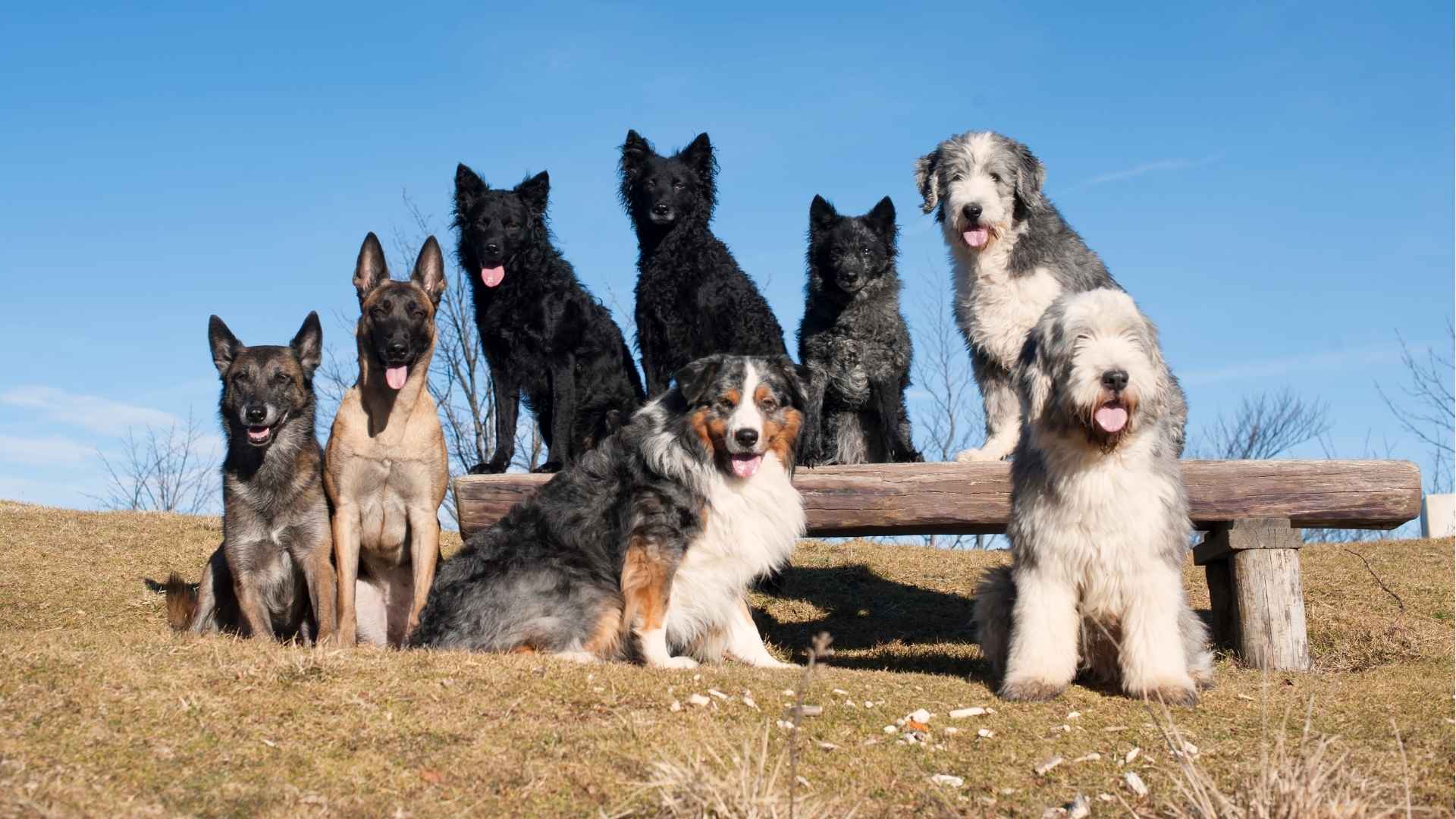Dogs fill our lives with joy, companionship, and unconditional love, but sadly, some breeds have much shorter lifespans than others. While every dog owner wishes for a lifetime with their furry friend, certain breeds are genetically predisposed to live only a few years. This can be heartbreaking, but it makes every moment spent with them even more precious.
Despite their brief time on earth, these dogs leave a lasting impact, offering boundless affection, loyalty, and unforgettable memories. Their shorter lifespans often stem from genetic factors, size, or specific health conditions, but with proper care, love, and attention, they can still enjoy happy, fulfilling lives.
If you’re considering adopting a dog with a shorter lifespan, understanding their needs and potential health risks can help you make the most of your time together. In this guide, we’ll explore some incredible yet short-lived breeds and how to cherish every moment with them.
Brief Lifespan Dog Breeds
1. Neapolitan Mastiff
The Neapolitan Mastiff, known for its massive size and deeply wrinkled skin, is a breed with an unfortunately brief lifespan. These powerful yet affectionate dogs typically live 7–9 years, with many succumbing to health issues even earlier. Their short lifespan is largely due to their enormous size, which puts extra strain on their joints, heart, and overall body functions.
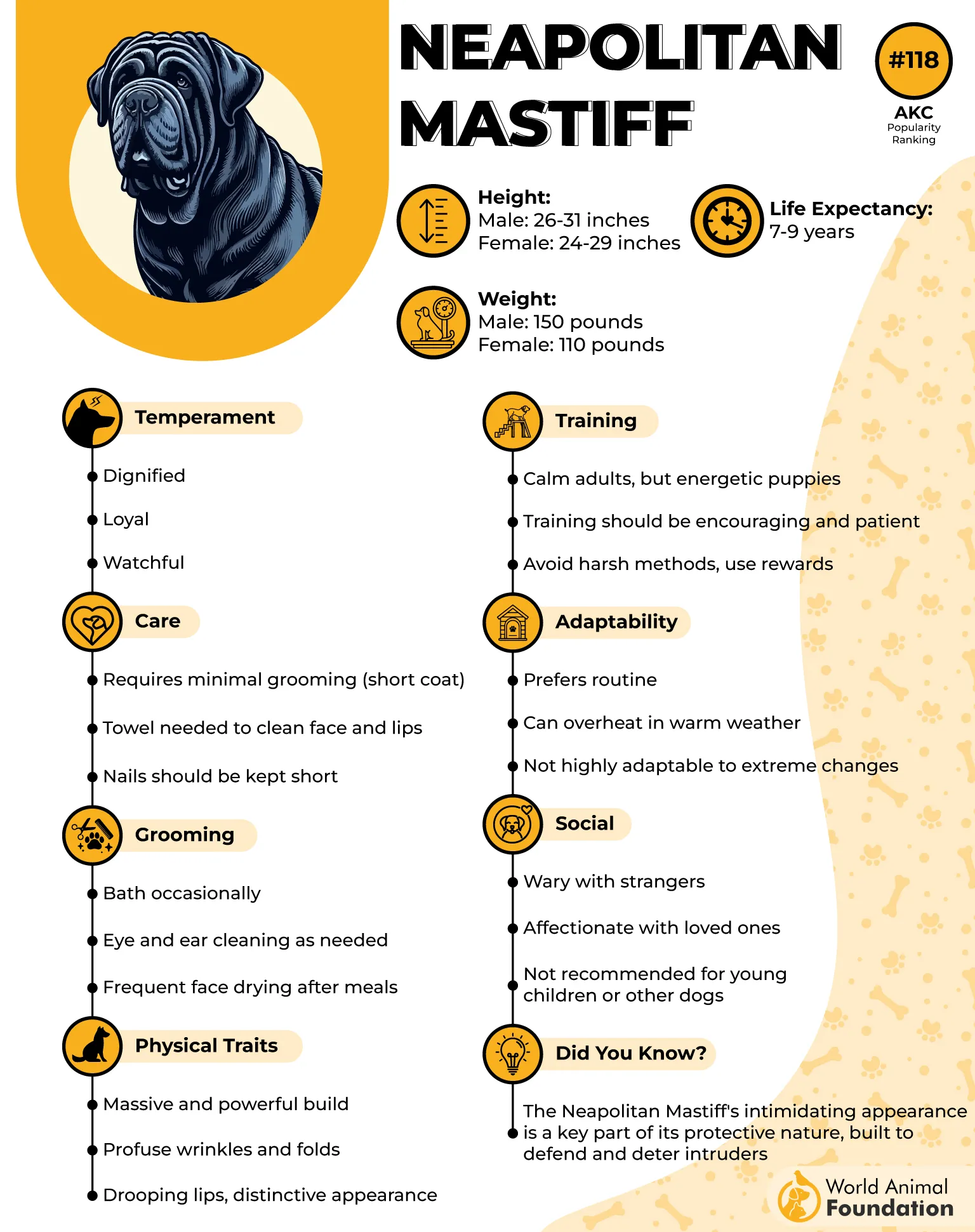
One of the primary reasons for their reduced longevity is their predisposition to joint and bone disorders. Hip and elbow dysplasia are common in this breed, often leading to mobility issues and arthritis at a young age. Their rapid growth as puppies also contributes to structural weaknesses, making early joint care essential.
Heart conditions, particularly dilated cardiomyopathy, are another major concern. Due to their large hearts, Neapolitan Mastiffs are at a higher risk of heart failure, significantly shortening their lifespan. Regular veterinary checkups and a balanced diet can help manage these risks, but genetics play a major role.
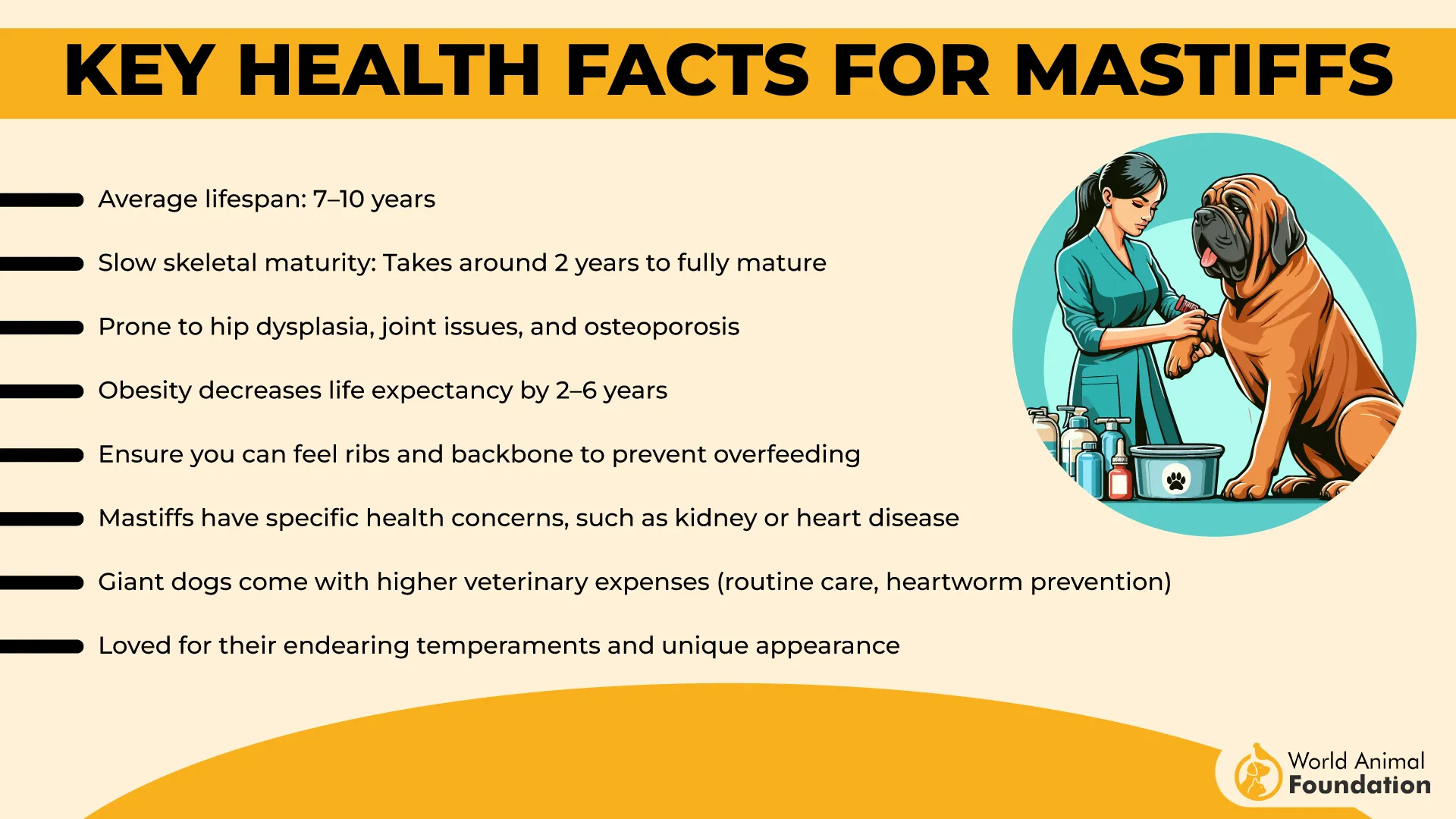
Their loose, wrinkled skin, a signature trait, can also lead to frequent infections and eye problems. Entropion, a condition where the eyelids roll inward, is particularly common and may require surgical correction. Keeping their skin folds clean and dry is crucial in preventing infections that could affect their quality of life.
Neapolitan Mastiffs are incredibly loyal and loving companions. Their calm demeanor and protective instincts make them excellent family guardians. While their time with owners may be fleeting, their impact is profound, leaving behind cherished memories of devotion, courage, and unconditional love.
2. Saint Bernard
The Saint Bernard, a breed famous for its rescue work and gentle temperament, has a relatively short life expectancy of 8–10 years. Their massive size contributes to various health challenges that can shorten their lifespan.
As per the AKC, Saint Bernards are prone to various health problems affecting their joints and mobility. Hip and elbow dysplasia are common due to their heavy frames, leading to arthritis and difficulty moving as they age. Maintaining a healthy weight can help reduce strain on their joints and improve their overall well-being.
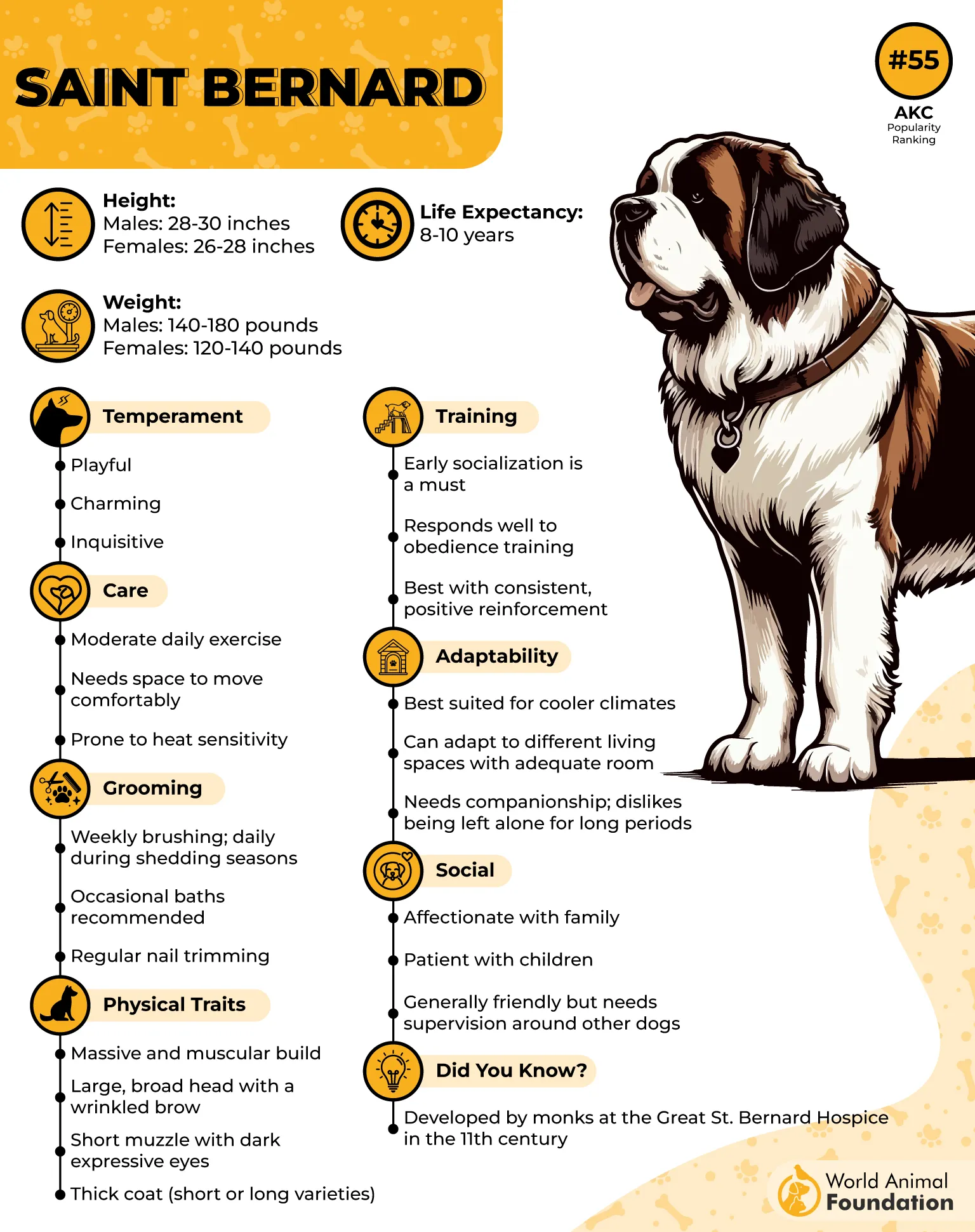
Heart disease is another major issue in this breed, with conditions like dilated cardiomyopathy affecting many individuals. Routine veterinary checkups and a heart-healthy diet can help manage these risks, but genetics play a crucial role in their life expectancy.
Their thick, dense coat makes them prone to heat sensitivity, leading to overheating, especially in warmer climates. Saint Bernards require cooler environments and proper hydration to avoid heatstroke. Regular grooming also prevents skin infections and discomfort.
Saint Bernards are affectionate, loyal, and excellent family companions despite their short lifespan. With proper care, a balanced diet, and attention to their unique health needs, they can enjoy a fulfilling life, leaving their owners with cherished memories of their gentle and loving nature.
3. Great Dane
The Great Dane, one of the most well-known giant breeds, is admired for its towering height and affectionate nature. However, despite their majestic presence, they have an average life expectancy of just 7–10 years, making them one of the shortest-lived dog breeds.
Their sheer size puts immense strain on their bodies, leading to several health concerns that affect their longevity.
One of the leading causes of death in Great Danes is bone cancer (osteosarcoma), a disease they are highly susceptible to. This aggressive cancer progresses rapidly, often limiting treatment options and significantly reducing their average lifespan. Early detection and veterinary care are crucial in managing the disease.
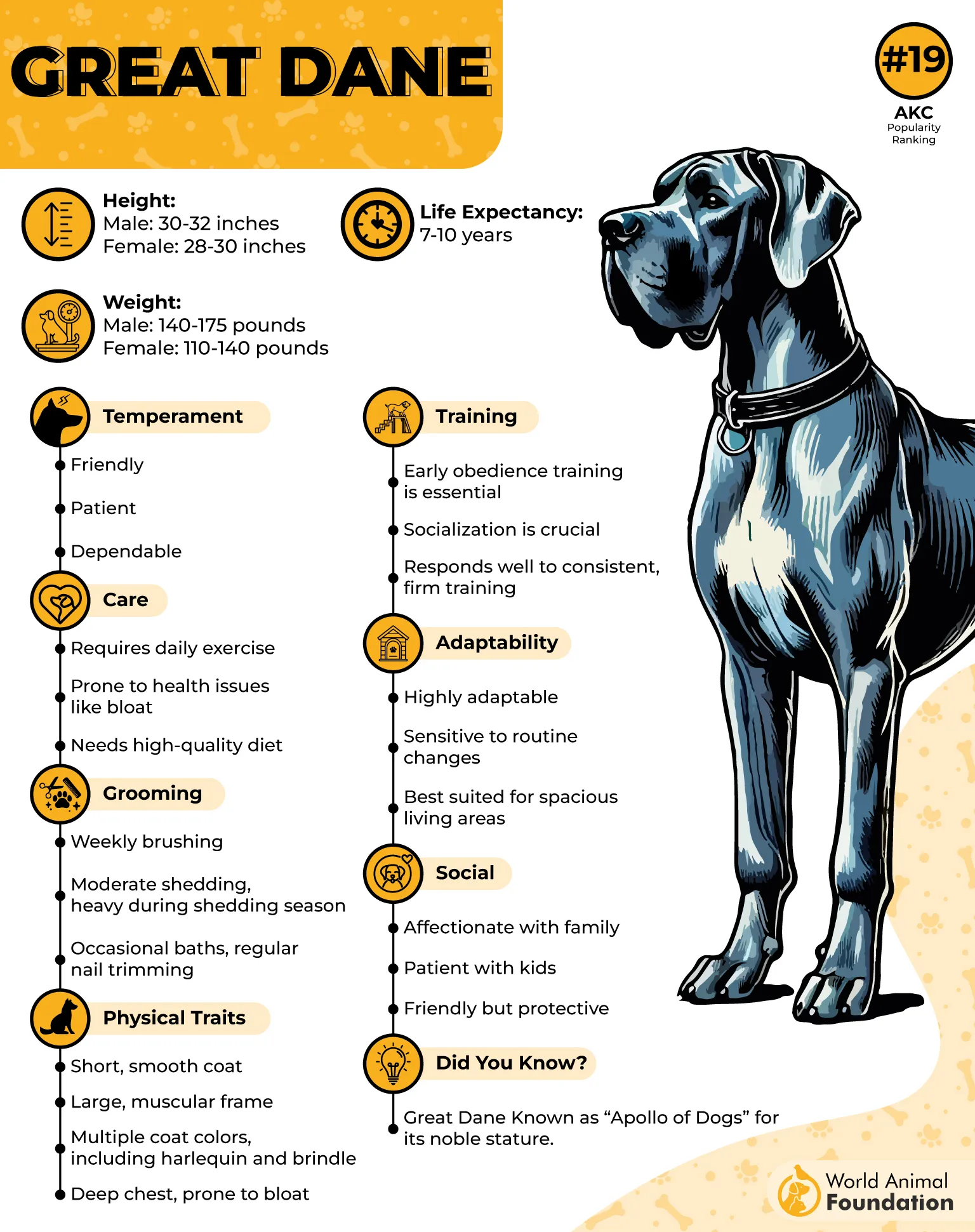
Like many larger breeds, Great Danes also suffer from joint problems, particularly hip and elbow dysplasia. These conditions cause pain and mobility issues, affecting their overall health. Keeping them at a proper weight and providing joint supplements can help alleviate discomfort and prolong their mobility.
Another common medical condition in Great Danes is gastric torsion, or bloat, a life-threatening emergency where the stomach twists. Great Danes’ deep chests make them more prone to this deadly condition. Feeding smaller meals and avoiding exercise right after eating can help reduce the risk.
Despite their health challenges, Great Danes are loving and devoted companions. With careful attention to their overall health, regular veterinary checkups, and a proper diet, owners can help maximize their Great Dane’s overall longevity, ensuring they live as full and happy a life as possible.
4. Irish Wolfhound
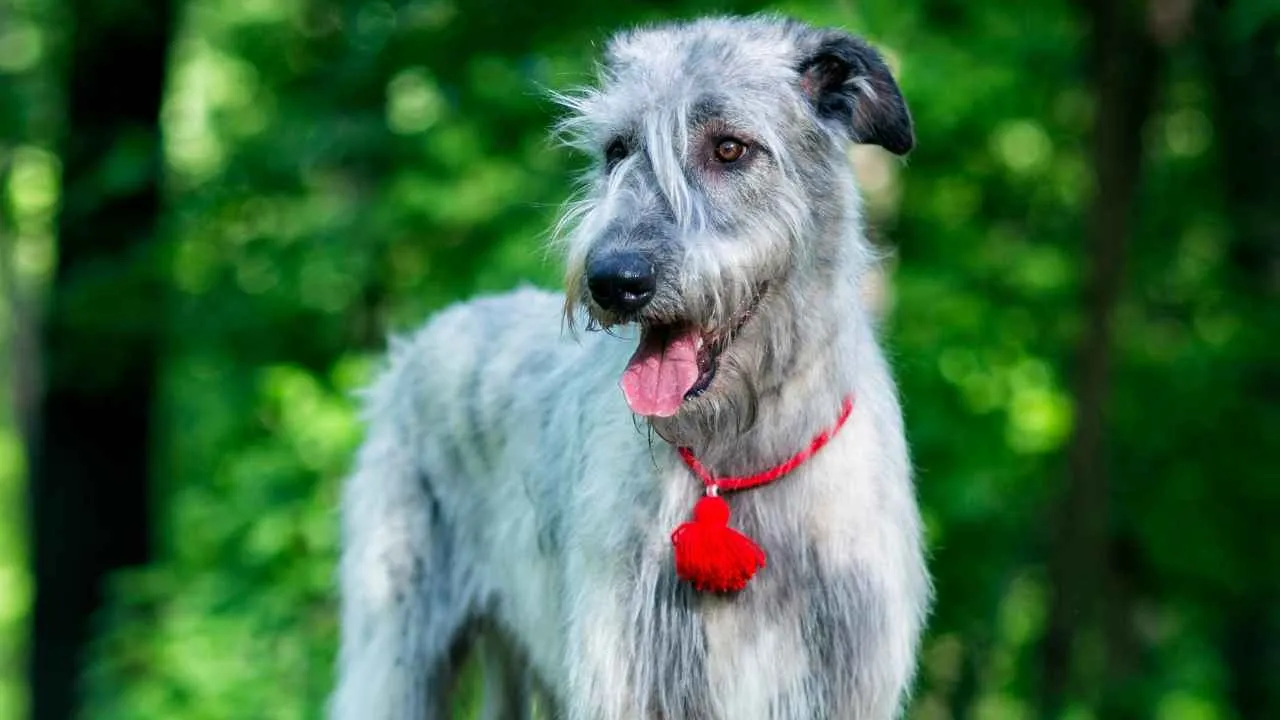
The Irish Wolfhound is known for its massive size and noble appearance, but it has a brief lifespan compared to many other breeds. With an average dog’s life expectancy of 6 to 8 years, this gentle giant faces a shorter life due to rapid growth and genetic predispositions affecting its overall health.
The breed’s history dates back centuries, when it was revered for its hunting and guarding abilities. However, the traits that made it a powerful working dog also contribute to its shorter lifespan.
The rapid growth required to reach its towering height places immense stress on bones and organs, leading to age-related decline much earlier.
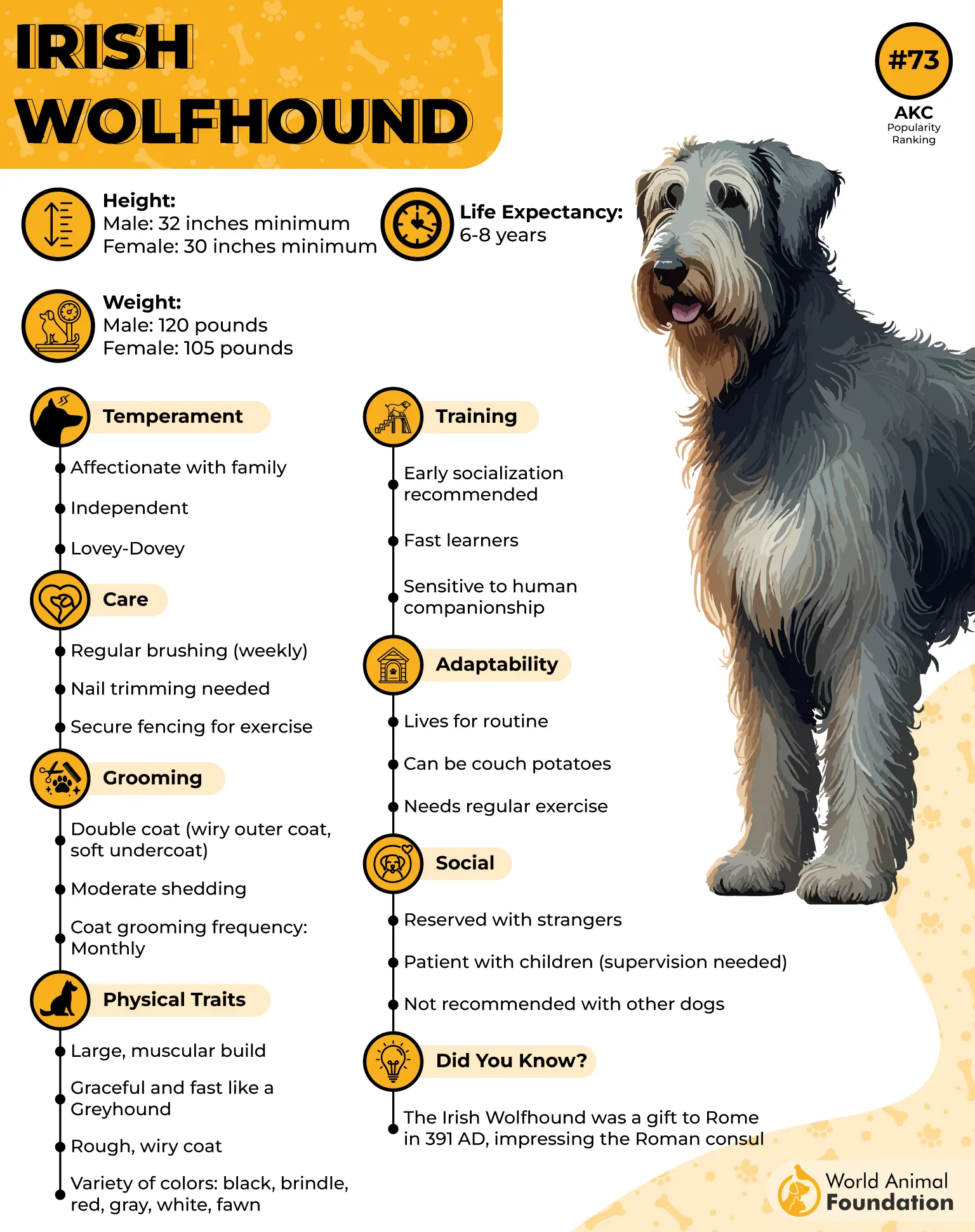
As PetMD states, the Irish Wolfhound is prone to several health concerns that contribute to its brief lifespan. Heart disease, particularly dilated cardiomyopathy, is a leading cause of early death, affecting the heart’s ability to pump blood efficiently.
Bone and joint issues like osteosarcoma and hip dysplasia are also common, often leading to mobility problems as the dog ages. Additionally, bloat, a life-threatening condition where the stomach twists, is a serious risk due to its deep chest structure.
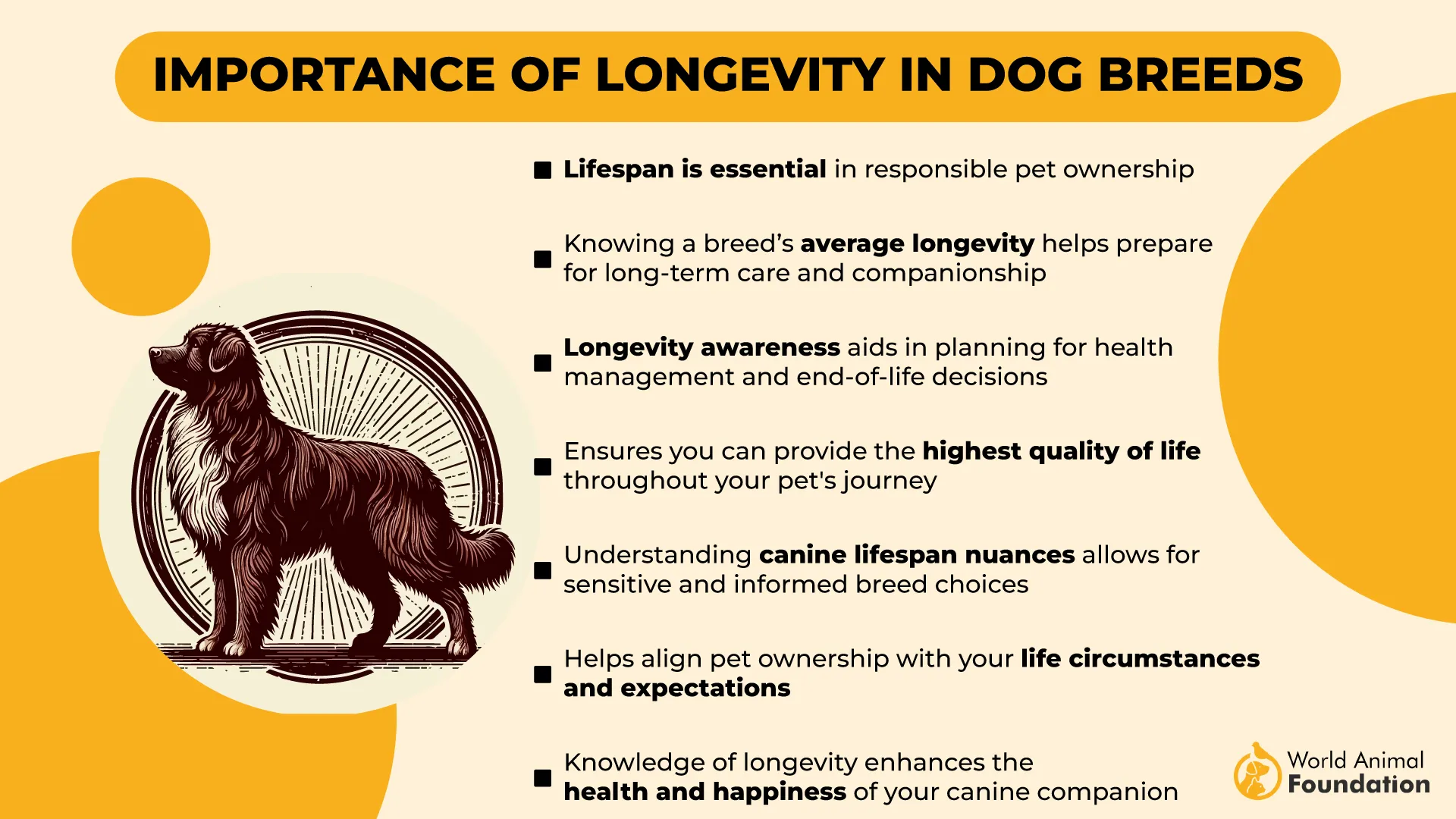
Regular vet check-ups and preventive care are essential in managing these health risks. Responsible breeding and proper care can sometimes help individual dogs live slightly longer than the average expectancy.
Irish Wolfhound is known for its gentle and affectionate nature, forming strong bonds with its owners. While its years may be few, the Irish Wolfhound leaves a lasting impression with its loyalty and companionship.
5. Dogue de Bordeaux
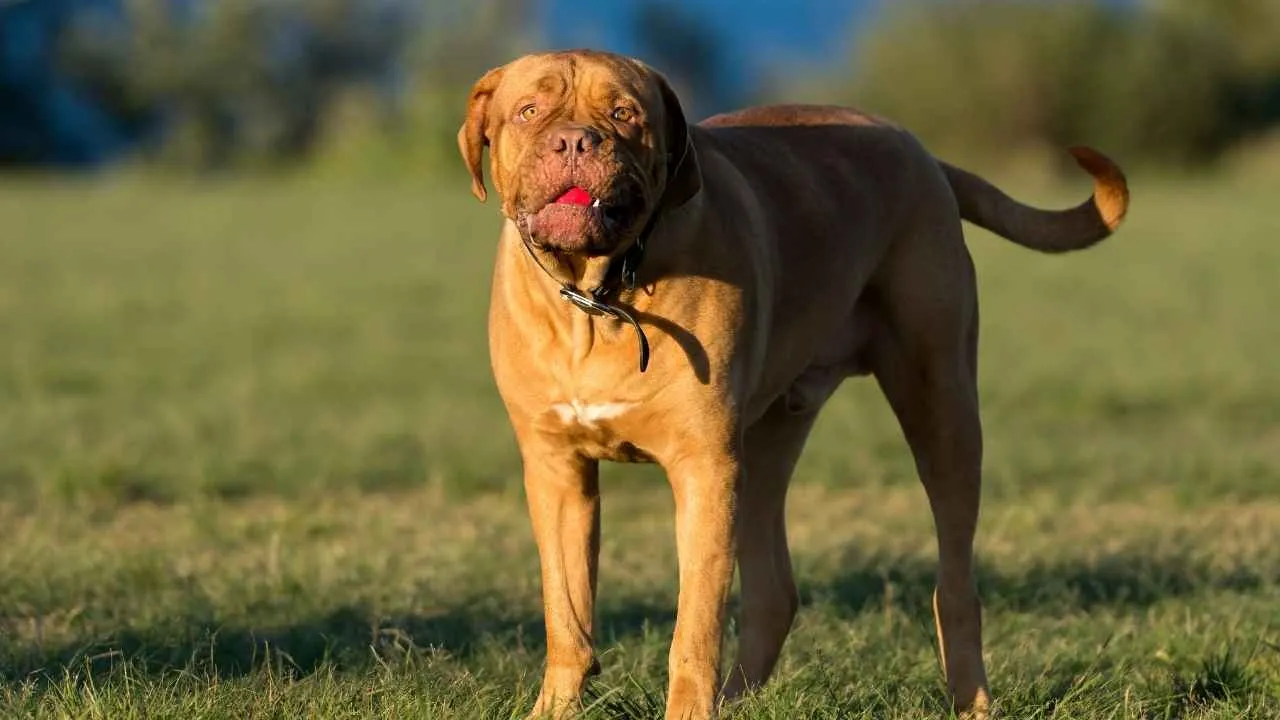
The Dogue de Bordeaux, also known as the French Mastiff, is a strong and devoted canine companion with a short life expectancy of 5–8 years. Its massive size contributes to various health concerns that limit its lifespan.
One of the most common health issues in the Dogue de Bordeaux is hip dysplasia, affecting mobility and comfort. Their heavy build strains their joints, making them more prone to arthritis and movement difficulties. Maintaining a healthy weight and providing joint care can help manage this condition.
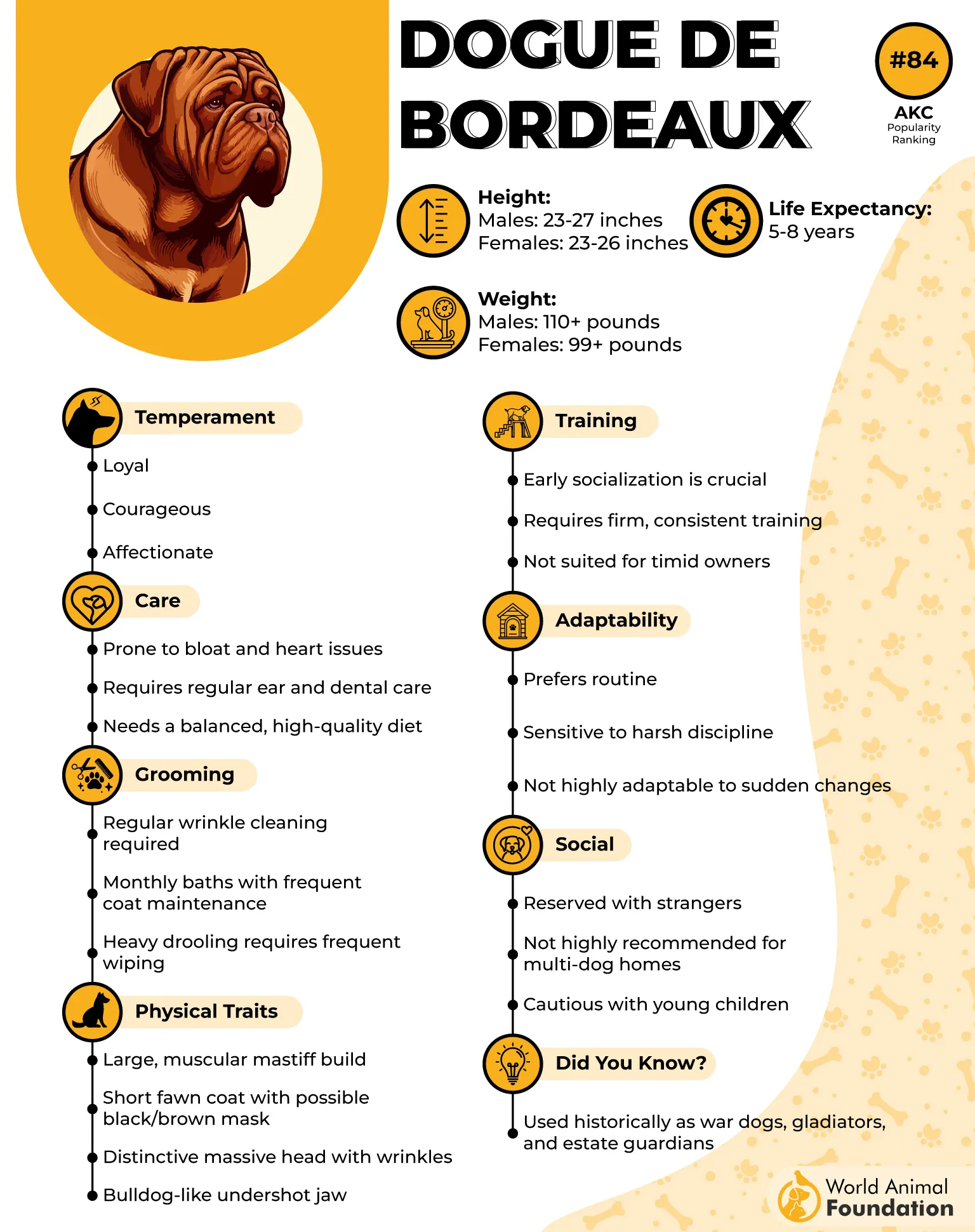
The breed is particularly prone to dilated cardiomyopathy (DCM), where the heart becomes enlarged and weak, reducing its ability to pump blood efficiently. This can lead to symptoms like fatigue, difficulty breathing, and sudden collapse.
Their short muzzle can lead to breathing difficulties, especially in hot or humid weather. This makes it essential to keep them cool and avoid overexertion to prevent respiratory distress.
Regular veterinary check-ups are crucial for detecting and managing common health problems such as heart disease, bloat, and skin infections. Responsible breeding practices, early diagnosis, and proper medical care can help improve their quality of life, even if they are naturally short in lifespan.
Despite their brief lifespan, the Dogue de Bordeaux is a deeply affectionate and protective breed. Their unwavering loyalty and strong bond with their families make every moment spent with them truly special.
6. Newfoundland
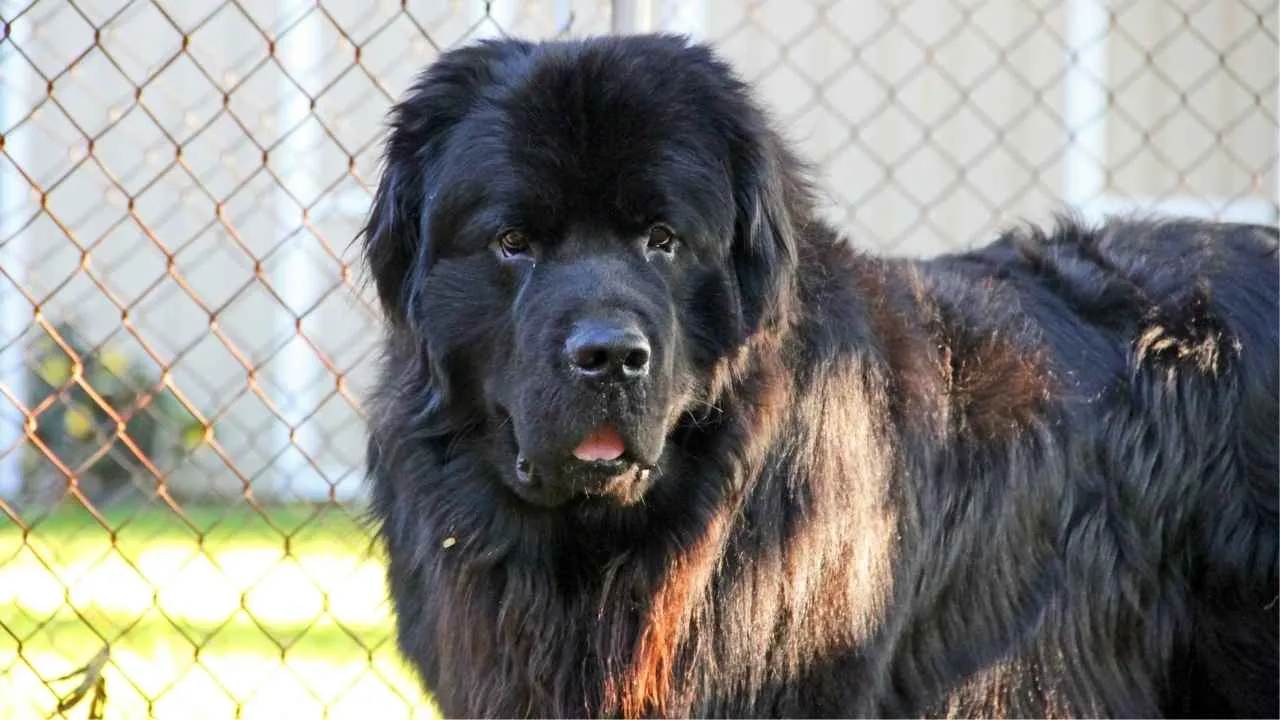
The Newfoundland, often called a “gentle giant,” is a massive working dog known for its sweet temperament and impressive strength. Originally bred for water rescues, these dogs are natural swimmers with a thick, water-resistant coat and webbed feet. Their loving and protective nature makes them excellent family companions.
Newfoundlands have a relatively short lifespan of around 8–10 years. Their large size contributes to early aging, and they are prone to health issues such as hip dysplasia, heart disease, and cystinuria—a genetic kidney condition. Responsible breeding and regular health screenings can help manage these risks.
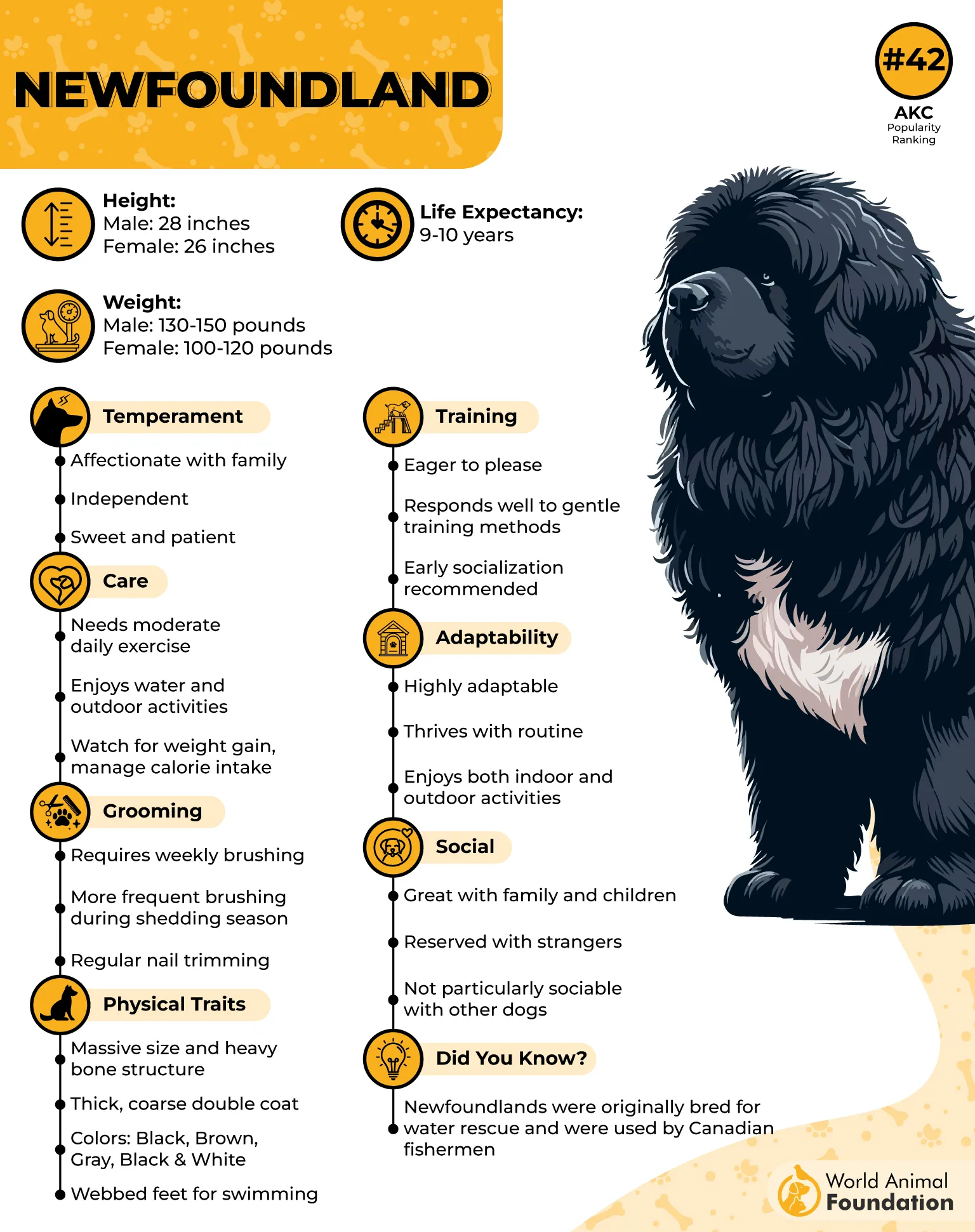
As noted by WebMD, one of the most concerning conditions affecting Newfoundlands is dilated cardiomyopathy (DCM), a heart disease that weakens the heart muscles, leading to congestive heart failure. This significantly impacts their lifespan, making routine vet checkups and heart monitoring essential for early detection and care.
Their thick double coat, while beautiful, requires regular grooming to prevent matting and overheating, especially in warmer climates. Without proper maintenance, skin infections and excessive shedding can become problematic, adding to their overall health challenges.
Despite their brief lifespan, Newfoundlands leave an unforgettable mark on their owners. Their loyal, gentle, and affectionate nature makes every moment with them special. With proper care, a balanced diet, and regular exercise, these lovable giants can enjoy a happy and fulfilling—though heartbreakingly short—life.
7. Leonberger
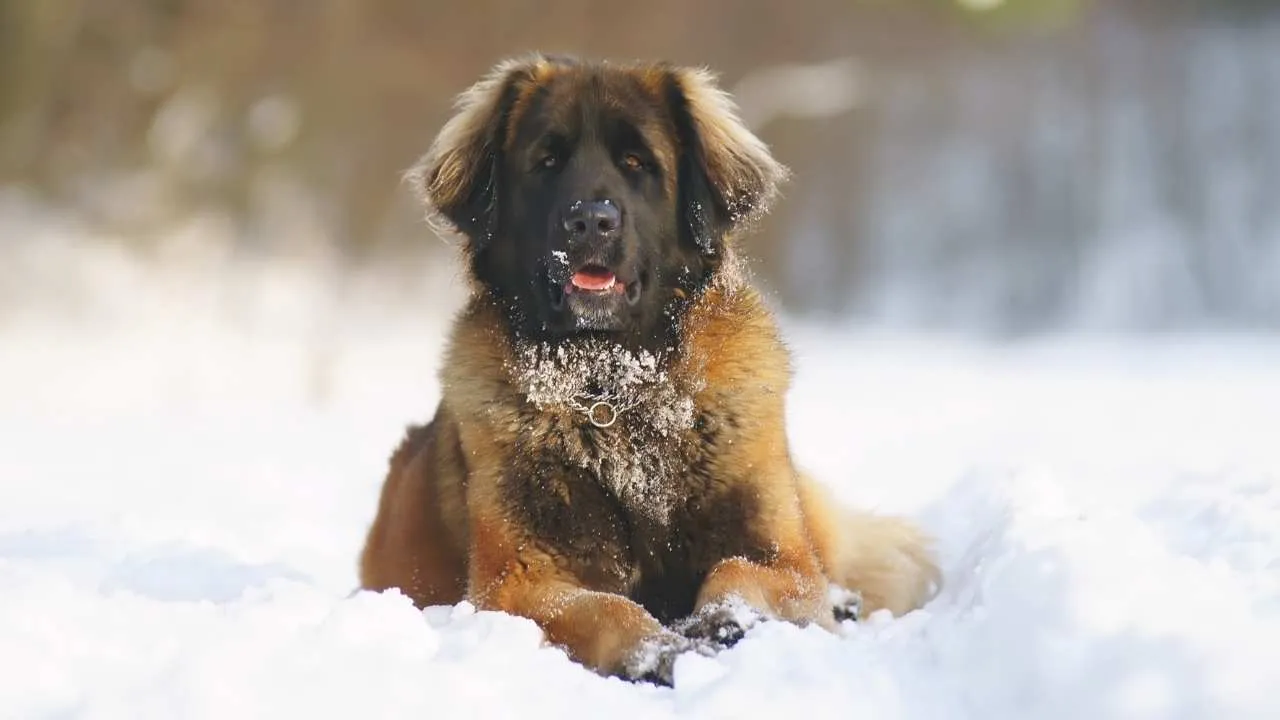
The Leonberger is a strikingly beautiful and affectionate giant breed, originally bred as a family companion and working dog. Known for their lion-like mane and gentle temperament, these dogs are strong and graceful, making them excellent therapy and rescue dogs.
Sadly, Leonbergers have a short lifespan of only 7–9 years, primarily due to their large size and genetic predisposition to health issues. Their rapid growth strains their joints, making them prone to hip and elbow dysplasia, which impacts mobility and overall well-being.
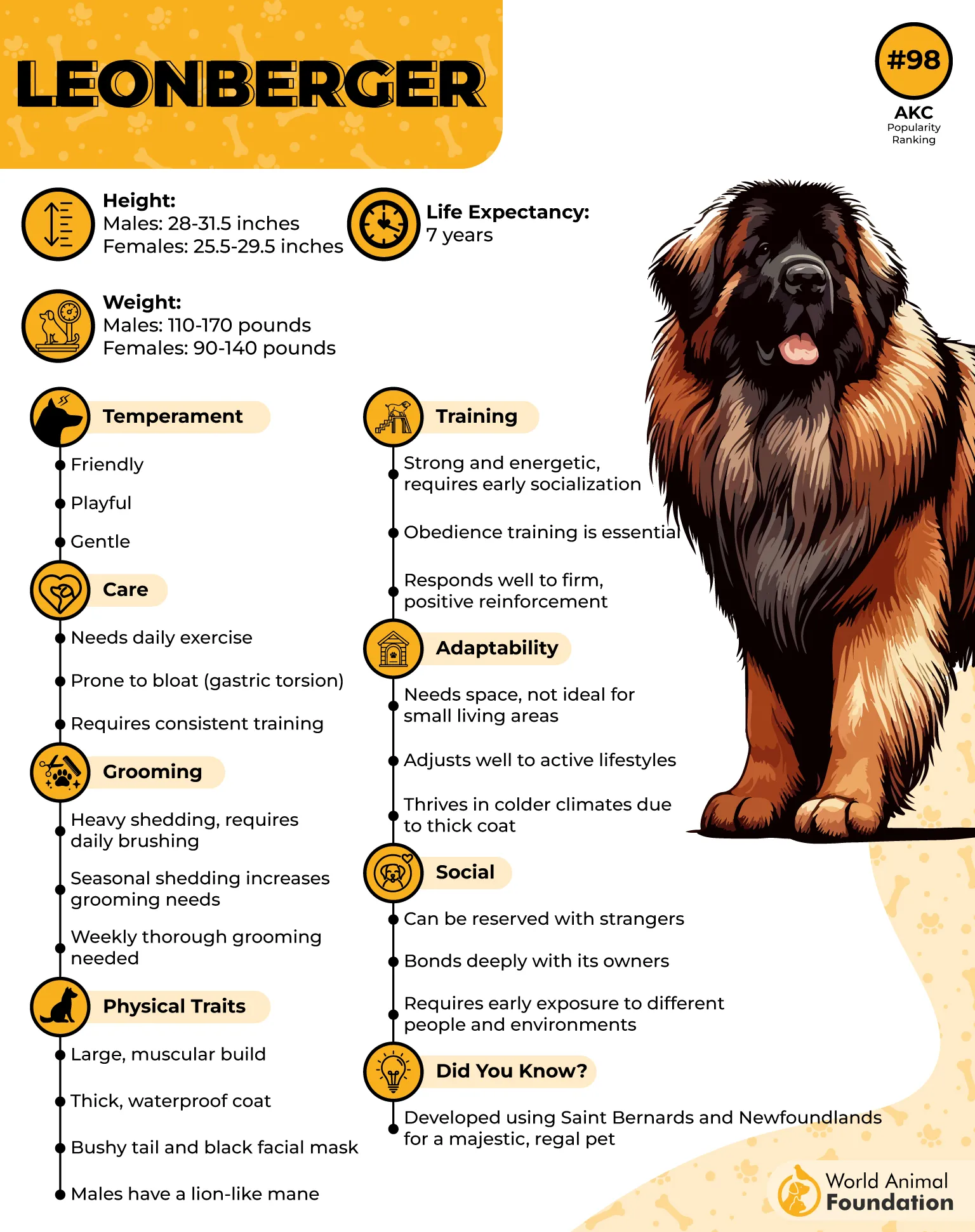
One of the most serious health concerns in Leonbergers is bone cancer (osteosarcoma), a common cause of early death in large breeds.
Additionally, bloat (gastric torsion) is a serious and life-threatening condition common in deep-chested larger dogs, requiring immediate medical attention.
Despite their imposing size, Leonbergers are gentle giants with a deep love for their families. They thrive on companionship and can suffer from separation anxiety if left alone for long periods, making them best suited for owners who can give them constant attention.
Though their time may be brief, Leonbergers bring unmatched loyalty, affection, and intelligence to their families. With proper healthcare, a nutritious diet, and regular exercise, they can enjoy a fulfilling, though heartbreakingly short, life.
8. Bernese Mountain Dog
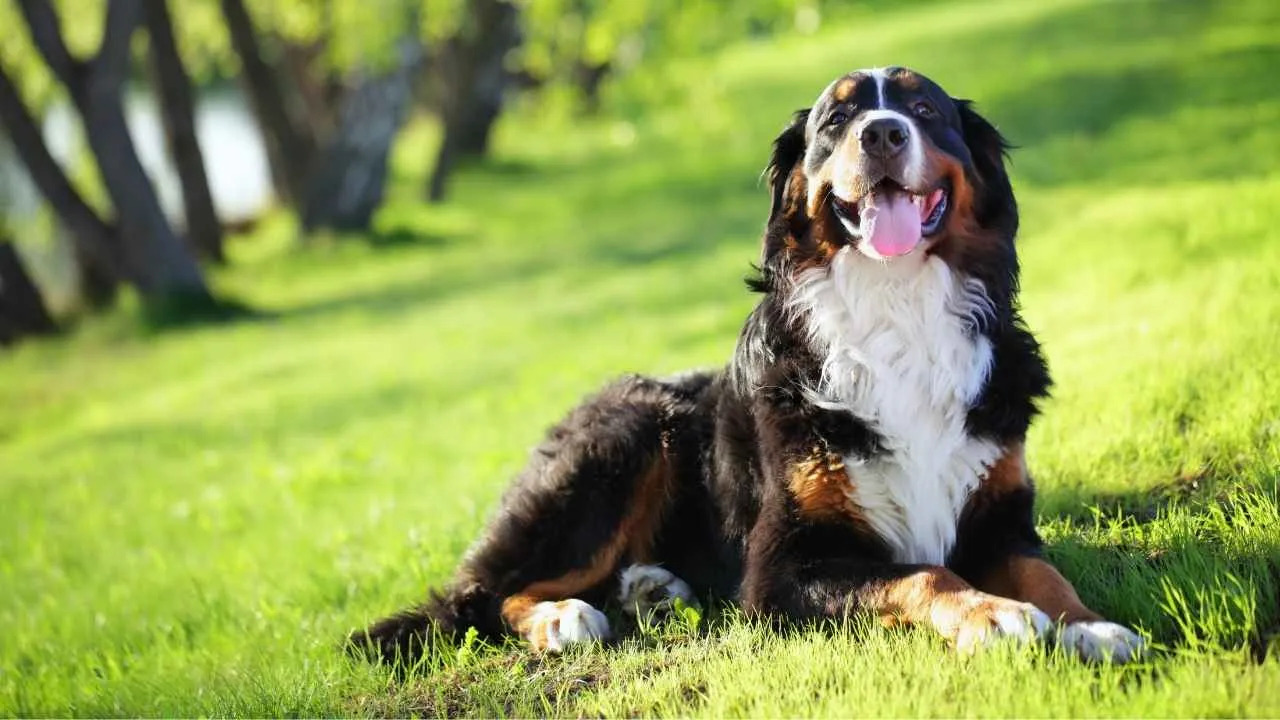
The Bernese Mountain Dog is one of the most popular breeds, known for its affectionate nature, intelligence, and striking tricolor coat. Originally bred as a working dog in the Swiss Alps, this gentle giant excels in farm work and is a wonderful companion for families.
The Bernese Mountain Dog is a large, affectionate breed known for its gentle temperament and striking tri-colored coat. Sadly, they may face an early death, with a lifespan typically ranging from just 6 to 8 years.
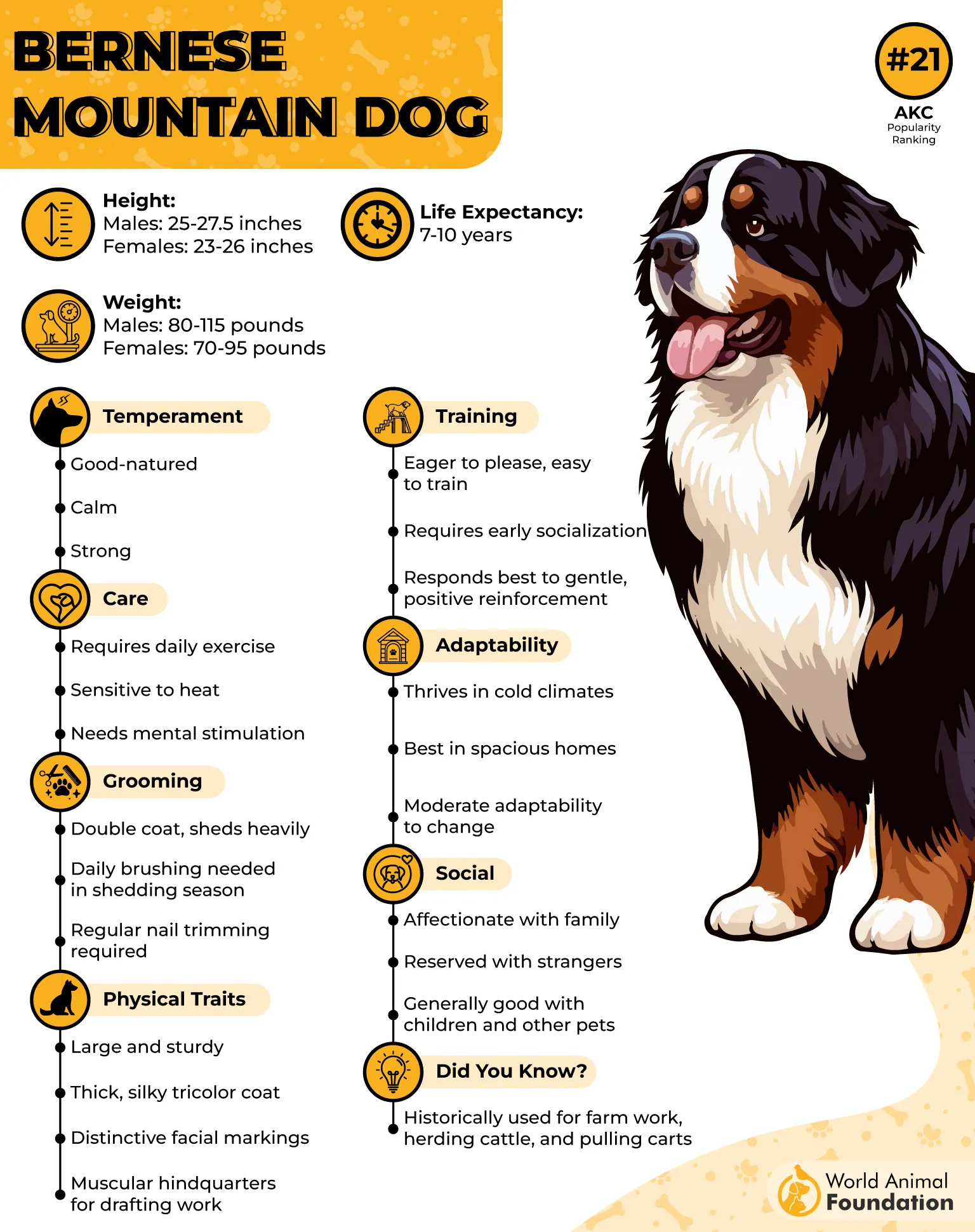
Bernese Mountain Dogs age rapidly, making them more prone to serious health issues. Cancer, particularly histiocytic sarcoma, is one of the leading causes of death in the breed. Bernese Mountain Dogs often struggle with joint and immune-related conditions from an early age.
One reason for their short lifespan is breed genetics. These factors make regular vet visits essential for monitoring their health and improving their quality of life.
Despite their relatively short time with their families, Bernese Mountain Dogs make exceptional companions, offering unwavering loyalty and affection. They thrive in active households and require regular exercise, proper nutrition, and routine veterinary care to maximize their lifespan.
9. Scottish Deerhound
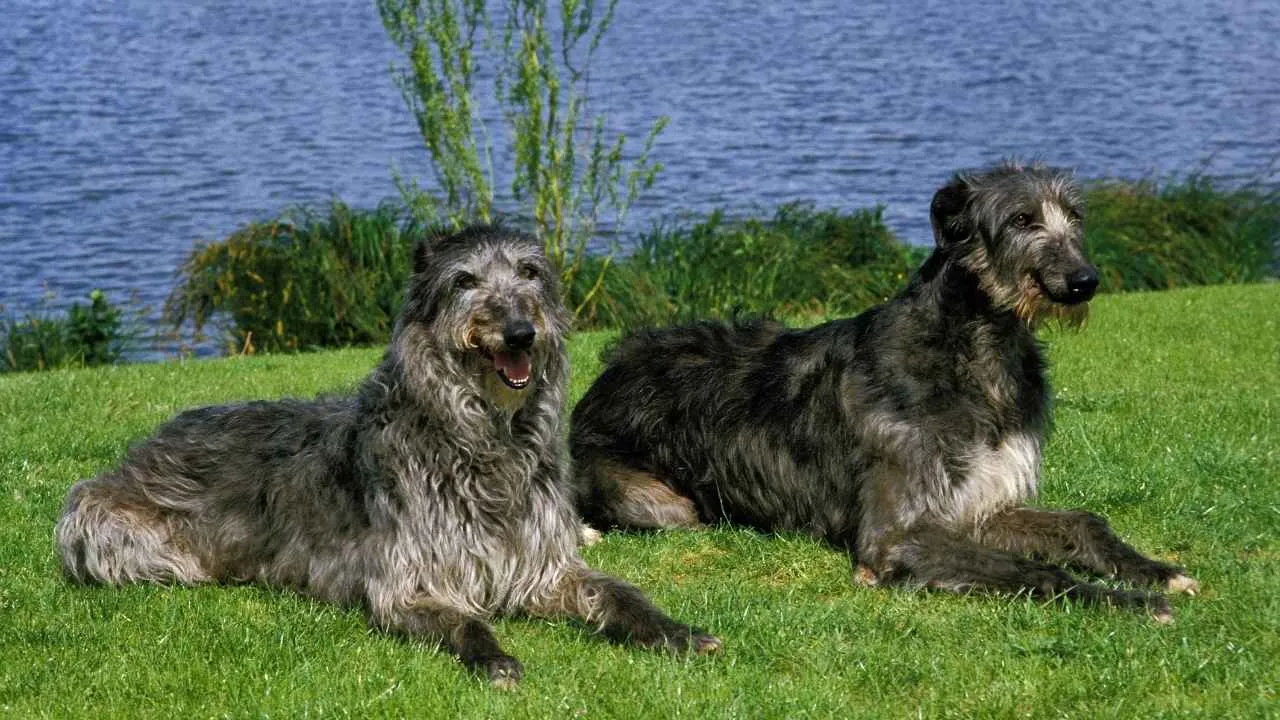
The Scottish Deerhound, often called the “Royal Dog of Scotland,” is a majestic and gentle giant known for its grace and hunting prowess. Despite its regal stature, this breed has a short lifespan of 8–10 years, primarily due to its large size and susceptibility to certain health conditions.
One of the main reasons for their brief lifespan is their predisposition to heart disease, osteosarcoma (bone cancer), and bloat—common issues in large and deep-chested breeds. These conditions can significantly shorten their lives, making regular vet checkups and a well-monitored diet essential for longevity.
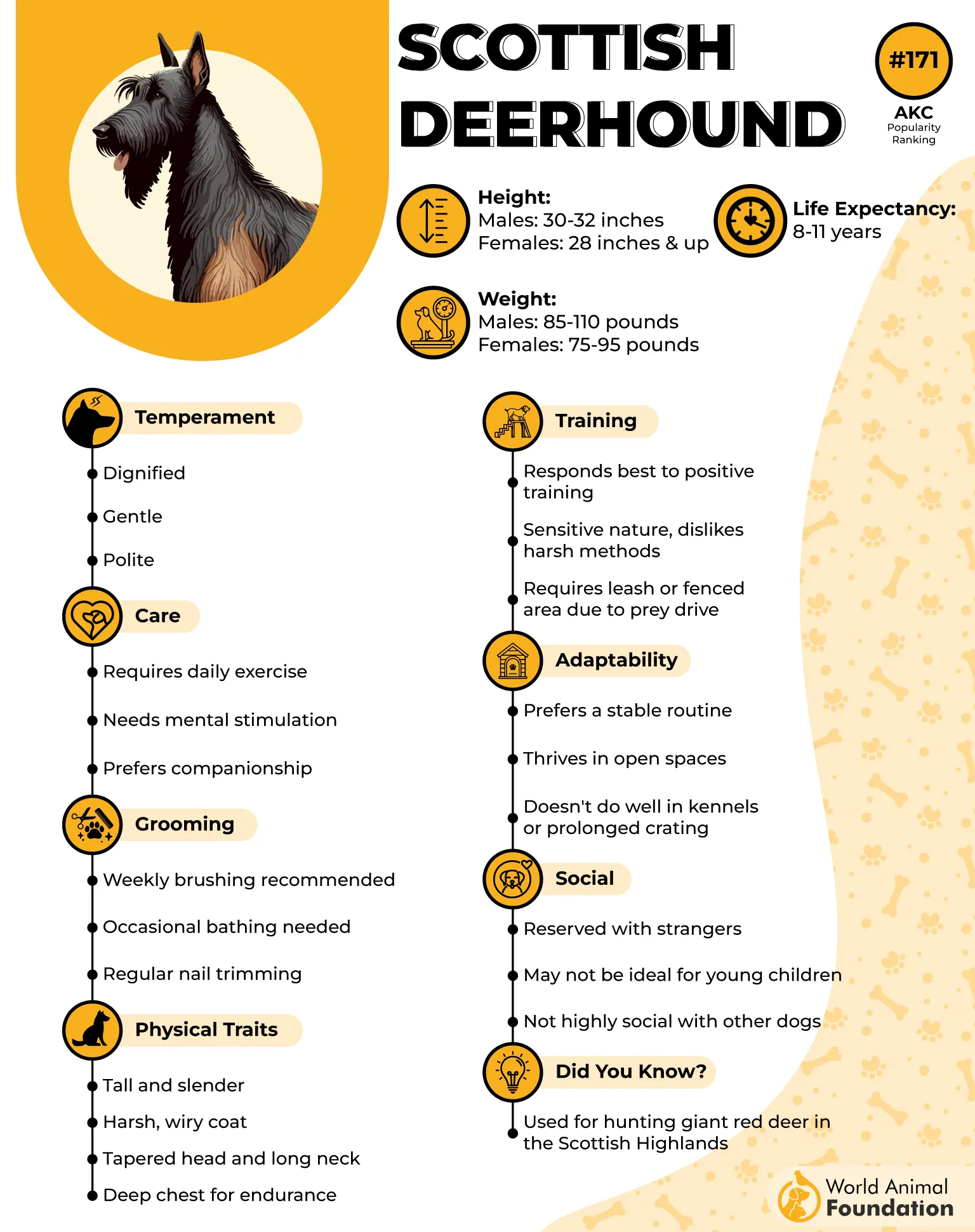
Scottish Deerhounds are a gentle, friendly breed and surprisingly laid-back despite their size, making them excellent family companions. They thrive in peaceful environments and require moderate exercise, but their love for lounging indoors is as strong as their historic hunting instincts.
Due to their rapid growth during puppyhood, they require a carefully balanced diet to support their bones and joints. Improper nutrition or excessive exercise at a young age can lead to severe orthopedic problems, impacting their already short lifespan.
Owning a Scottish Deerhound means cherishing every moment with a breed that offers unwavering loyalty and a quiet, dignified presence. While their time may be short, their impact on a loving owner’s life is nothing less than extraordinary.
Conclusion
While breed size and genetics significantly determine a dog’s lifespan, some breeds tend to live longer than others. Smaller dog breeds like Toy Poodles and Jack Russell Terriers often enjoy longer lifespans than their larger counterparts.
Similarly, popular breeds like Australian Cattle Dogs and Border Collies are known for their high energy and intelligence. They have been recorded as living well beyond their expected breed dates with proper care. On the other hand, flat-faced breeds like the English Bulldog may face health challenges that impact longevity.
Whether choosing a Labrador Retriever, a flat-face companion, or one of the smaller breeds, responsible pet ownership and organizations like Dogs Trust emphasize the importance of proper nutrition, exercise, and regular veterinary care to ensure a fulfilling life for your furry friend.


